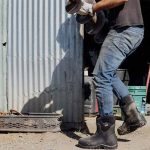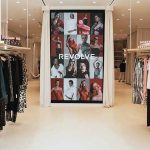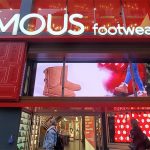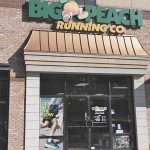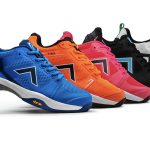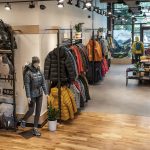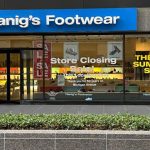Oakley pointed to the lack of a new break-out model in its Sunglass line this year and heavier spring retail inventories that carried over into Q3 as reasons for the fairly sharp decline in its core Sunglass business for the third quarter. The newer footwear and apparel categories were said to be “fine”, but the company chairman and CEO Jim Jannard reminded analysts on a conference call that “the sunglass business sucked pretty bad the first half of the year”.
The company said that “solid gains in apparel and footwear net sales” drove non-sunglass sales over the $50 million for the first time, with footwear showing the highest growth of all categories in the quarter. “New categories” sales were 32.6% of total sales versus 26.9% in the year-ago period.
While footwear and apparel continue to maintain lower gross margins than the sunglass business, the company said they realized improved gross margins from footwear and apparel due to “better production sourcing and product line planning” as well as the weaker U.S. dollar and inventory management improvements. Goggle sales grew 49.4%
The sunglass business was said to be affected by the spring inventories that were left over due to the poor weather, resulting in lackluster “late summer re-orders”. The company saw sales to Sunglass Hut, its largest customer by far, fall 31.6% in the quarter and is off 26% for the year. Oakley said the brand “continues to perform well” at Hut, but the retailer is reducing inventories while maintaining Oakley shelf space and retail volume.
OO expects to see an increase in Q4 purchases from Hut due to Holiday initiatives at retail to drive sales.
Total sunglass unit sales declined 16.8%, which reflects an 8.6% increase in Average Selling Price thanks to increased owned-retail contribution, the weaker dollar and increased sales in the higher-priced polarized products, which doubled in sales to “just over $10 million”.
Sales in the U.K. were said to be “very strong”, as OO pointed to great weather there as a driver. Sunglass sales in Japan were “below forecast” while south Pacific sales were “below expectation”, decreasing 11% due to decreases at Sunglass Hut and Luxotticas acquisition of Australias OPSM. Europe, Latin America, Japan, and South Africa each reported double-digit sales growth, while Asia reported five percent growth and sales in Canada were flat. Total International sales grew just 2.7% on a constant currency basis.
The company did admit that newer sunglass introductions had not “generated the kind of market response” that had expected, with most styles seeing just “average sale volumes”. The Half Jacket, the leading new product from last year, was the “strongest performer”, capturing almost 12% of all sunglass sales.
The backlog decline at the end of the quarter reflected a substantial drop in eyewear orders, which OO attributed to the inability to anniversary against large Sunglass Hut holiday that were received in September last year, but in October this year. Goggle backlog is also off, as the company fulfilled a higher percentage of orders in Q3 this year.
Spring futures for footwear and apparel combined are up approximately 23% worldwide, but reflect “very strong growth” in apparel bookings and a “slight decline” in footwear orders, due in part by a reduction in sandal orders from U.S. retailers. International bookings for footwear and apparel are up about 40%, while the U.S. was down by about 19%. Total backlog for the categories for spring and remaining fall orders is up 55% from a year ago.
The higher inventory levels at quarter-end reflect a 31% increase in footwear, apparel and goggle inventories “driven by increased sales in these categories”, which rose 41%. Inventory was also increased by $4.1 million to support the 38.8% in ownedretail store count, which contributed $4.1 million of the gains.
The company expects to add 13 new Oakley stores and 11 new Iacon locations this year. The Oakley brand represents 32% of Iacon sales. The company sees owned-retail accounting for “a little more than 10%” of total year sales and 20% of the total U.S. business.
>>> Clearly trouble brewing here when the big three all take a dip in the same quarter. It will be tough to replace biz with their own retail and newer categories as footwear and apparel appears to remain volatile…

